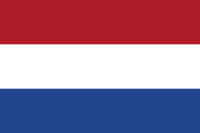List of Intangible Cultural Heritage elements in the Netherlands

The United Nations Educational, Scientific and Cultural Organisation (UNESCO) intangible cultural heritage elements are the non-physical traditions and practices performed by a people. As part of a country's cultural heritage, they include celebrations, festivals, performances, oral traditions, music, and the making of handicrafts.[1]
Background
[edit]The "intangible cultural heritage" is defined by the Convention for the Safeguarding of Intangible Cultural Heritage, drafted in 2003[2] and took effect in 2006.[3] Inscription of new heritage elements on the UNESCO Intangible Cultural Heritage Lists is determined by the Intergovernmental Committee for the Safeguarding of Intangible Cultural Heritage, an organisation established by the convention.[4]
The Netherlands ratified the convention on 15 May 2012.[citation needed]
Intangible Cultural Heritage elements
[edit]Representative List
[edit]| Name | Image | Year | No. | Description |
|---|---|---|---|---|
| Craft of the miller operating windmills and watermills | 
|
2017 | 01265 | |
| Corso culture, flower and fruit parades in the Netherlands | 
|
2021 | 01707 | Bloemencorso –meaning "flower parade/pageant/procession"–. is a parade where the floats (praalwagens), cars and –in some cases– boats are magnificently decorated or covered in flowers. |
| Falconry, a living human heritage +[a] | 
|
2021 | 01708 | |
| Rotterdam Summer Carnival | 
|
2023 | 01870 | The Zomercarnaval –meaning "Summer Carnaval"– is an annual event in Rotterdam. It mimics the Carnaval of Latin America and the Dutch Caribbean (Aruba, Bonaire & Curaçao). |
| Traditional irrigation: knowledge, technique, and organization +[b] | 2023 | 01979 |
See also
[edit]Notes
[edit]- ^ Shared with Austria, Belgium, Croatia, Czechia, France, Germany, Hungary, Ireland, Italy, Kazakhstan, Republic of Korea, Kyrgyzstan, Mongolia, Morocco, Pakistan, Poland, Portugal, Qatar, Saudi Arabia, Slovakia, Spain, Syria, and the United Arab Emirates.
- ^ Shared with Austria, Belgium, Germany, Italy, Luxembourg, and Switzerland.
References
[edit]- ^ "What is Intangible Cultural Heritage?". UNESCO Intangible Cultural Heritage. Retrieved 13 January 2024.
- ^ "Text of the Convention for the Safeguarding of Intangible Cultural Heritage". UNESCO Intangible Cultural Heritage. Retrieved 13 January 2024.
- ^ "The States Parties to the Convention for the Safeguarding of the Intangible Cultural Heritage (2003)". UNESCO Intangible Cultural Heritage. Retrieved 13 January 2024.
- ^ "Functions of the Intergovernmental Committee for the Safeguarding of Intangible Cultural Heritage". UNESCO Intangible Cultural Heritage. Retrieved 13 January 2024.
External links
[edit]- UNESCO Intangible Cultural Heritage: Official site
- UNESCO Intangible Cultural Heritage in the Netherlands: Official site


